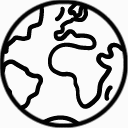Why WWF and H&M partnered on water
Water is essential for all life on Earth. But problems with freshwater availability and contamination are spreading across the globe. Today, around 2,3 billion people live under water stress. According to WWF’s Living Planet Report 2020, global freshwater species populations have on average declined with 84 percent since 1970. In addition, World Economic Forum has ranked the water crisis among the ten top risks facing our society.
Many industries, such as the fashion industry, is reliant on abundant amounts of clean water, but often also contributes to the contamination of it. It is therefore vital that the private sector takes responsibility and come together with business peers, policy makers, NGOs and communities to deal with these challenges.
This is why WWF and H&M Group entered a collaboration on water stewardship in 2011; to improve water management across H&M’s value chain as well as to work collectively with others, within and beyond the fashion industry, for a more responsible water use.























